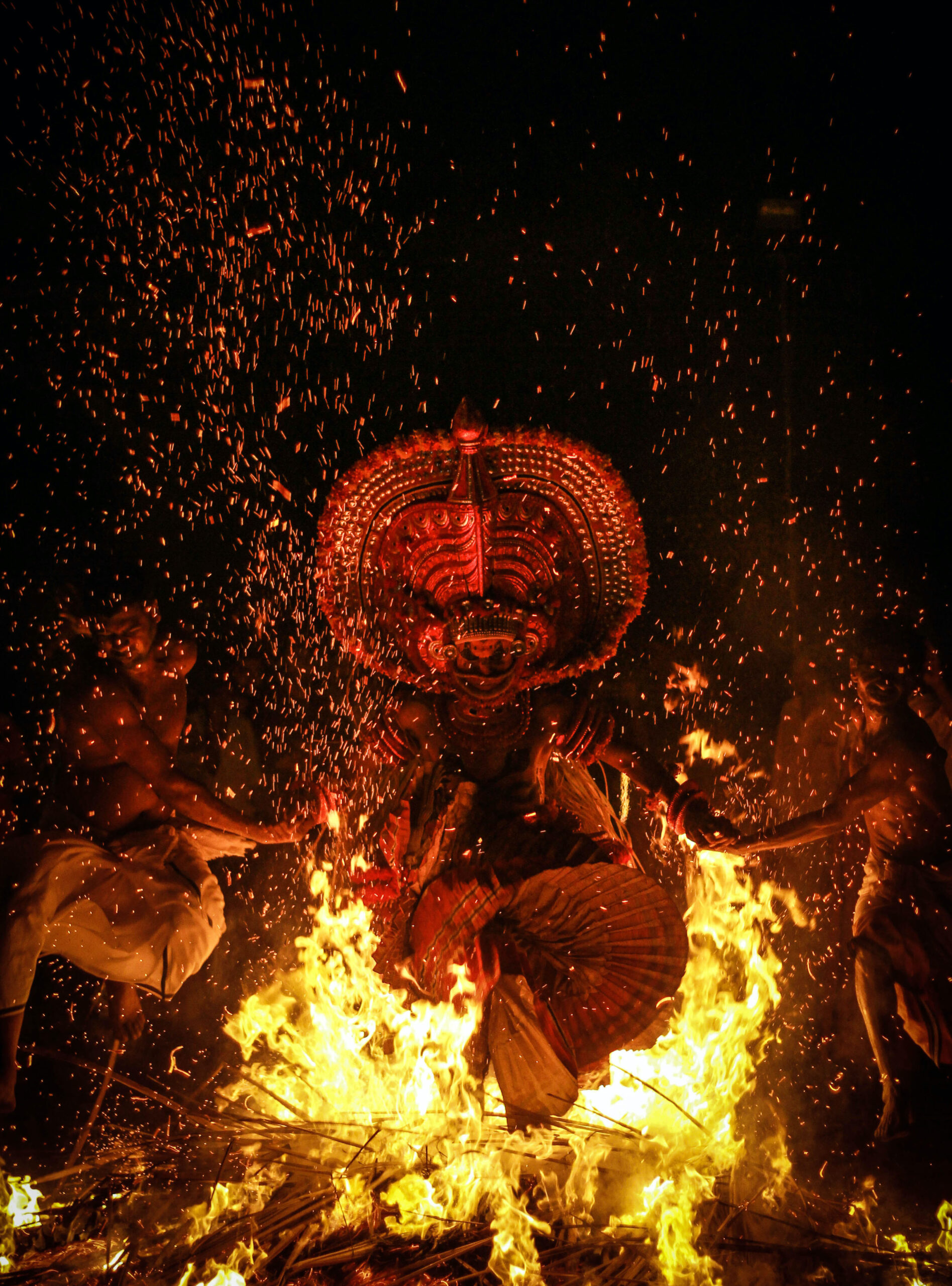A Medley of Myth and Legends
Origin of Theyyam
The genesis of Theyyam dates back to antiquity, with its roots deeply entwined with the Dravidian culture that once flourished in the Southern part of India. Its history is a complex web, incorporating elements of tribal folklore, ancient rituals, and socio-cultural narratives.
The art form has evolved over the centuries, metamorphosing from primitive ritual dances performed in tribal hamlets to a full-fledged art form with religious implications. The ritualistic performances, initially believed to be an appeasement to nature deities, gradually became a medium to channel gods and goddesses, drawing not just from local folklore but also from Hindu mythology.
There are about 456 types of Theyyams documented, each with its own unique rituals, costumes, and stories. This multiplicity adds another layer of complexity and richness to the art form. Theyyam is mainly performed by male artists.
A Divine Inference
The term ‘Theyyam’ originates from the Malayalam word ‘Daivam,’ which translates to ‘God.’ This is reflective of its essence, which goes beyond the mere performance aspect and delves into the realm of the divine.
Theyyam’s Philosophy: The Social Subtext
Theyyam serves as a mirror to society, reflecting not just its divine aspirations but also its human inequalities. Theyyam is typically performed by people from marginalised castes and tribes like Pulayar, Vannan, Malayan, Anhoottan, Munnoottan, Mavilan, Koppalan, Velan, Chingathan, Kalanaadi, Paravan, Nalikeyavar, etc.
The ritual provides an arena where conventional caste hierarchies are temporarily upended: the performers, belonging to the lower strata of society, become gods and are revered by higher-caste individuals during the performance. This subversion of social norms makes Theyyam a potent commentary on the rigid caste system and other social issues. It also provides a voice to the marginalised, an opportunity to be heard, and a momentary escape from social subjugation.
North Kerala: The Only Place on Earth Where You Can See Theyyam
Theyyam is almost exclusively performed in North Kerala, particularly in the districts of Kasaragod and Kannur. The art form is so intricately linked to these regions that you won’t find authentic performances anywhere else in Kerala, let alone outside the state. This regional specificity adds an extra layer of uniqueness to Theyyam, making it a priceless cultural relic of the Malabar region.
More than a Mere Art Form or Performance
Theyyam Locations
Theyyam performances usually occur in temples, sacred groves known as ‘Kaavu,’ and ancestral homes. Each setting offers a unique aesthetic and spiritual experience. Temples and ancestral homes provide a more intimate setting, whereas performances in ‘Kaavu’ often take on a more mystical tone, surrounded by the natural elements.
Theyyam Season
Theyyam season starts from the tenth day of the Malayalam month of Thulam (usually falls during October, and known as paththaam-udayam) and lasts up to seven months till the middle of Edavam month (typically around May end).
The Performance
A Sacred Reverence: Why Theyyam Demands Your Respect
Theyyam is not just an art form; it is a religious ritual, a sacred tradition, and a deeply sensitive cultural practice. Unlike any other conventional art forms, it engages in a deeper dialogue with the divine and the community.Treating the performers and rituals with the respect and dignity it deserves is not just ethical but also enrich the way you experience Theyyam.
Socio-Economic Impact: Livelihood and Legacy
For performers and their families, Theyyam is not merely an art form; it is a way of life and a livelihood. The income generated during the Theyyam season—spanning around six months—sustains these families for the entire year. Theyyam performers’ legacy is zealously guarded and passed down to younger generations, ensuring the art form’s continuity and relevance. This generational transmission is facilitated through rigorous training and initiation rituals, often starting at a very young age.
Responsible Tourism: Celebrating and Sustaining Theyyam
We Invite You to the Divine Stage
We warmly invite you to join a journey that transcends mere observation and offers a deeply immersive experience. Our commitment to sustainability and responsible tourism ensures that your cultural journey not only enriches you but also supports the talented artists and their communities.
Join our guided Theyyam Tour to celebrate tradition, fosters divine connection, and leaves lasting memories.
To know more and plan your itinerary, contact a Theyyam Trails representative at +91 8050 640 555 or email us at hello@theyyam.net.
Theyyam Stories
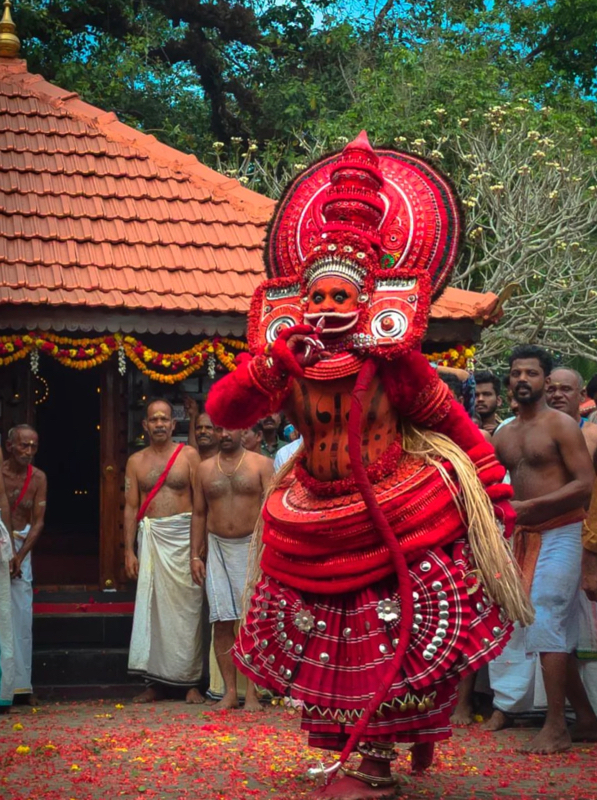
Bali Theyyam
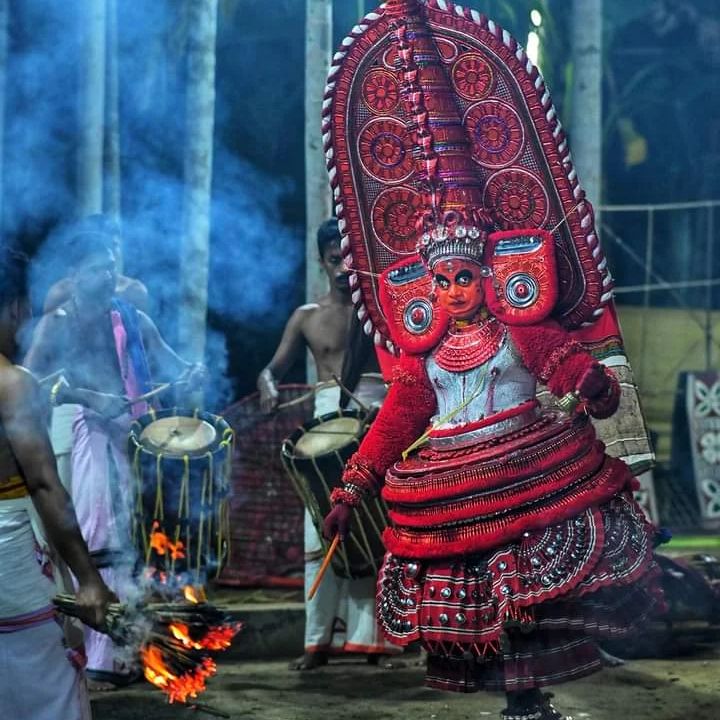
Bhairavan Theyyam

Agni Kandakarnan Theyyam

Vayanaattu Kulavan Theyyam

Vairajathan Theyyam

Poomaruthan Theyyam

Padaveeran Theyyam

Narambil Bhagavathi Theyyam

Madayil Chamundi Theyyam
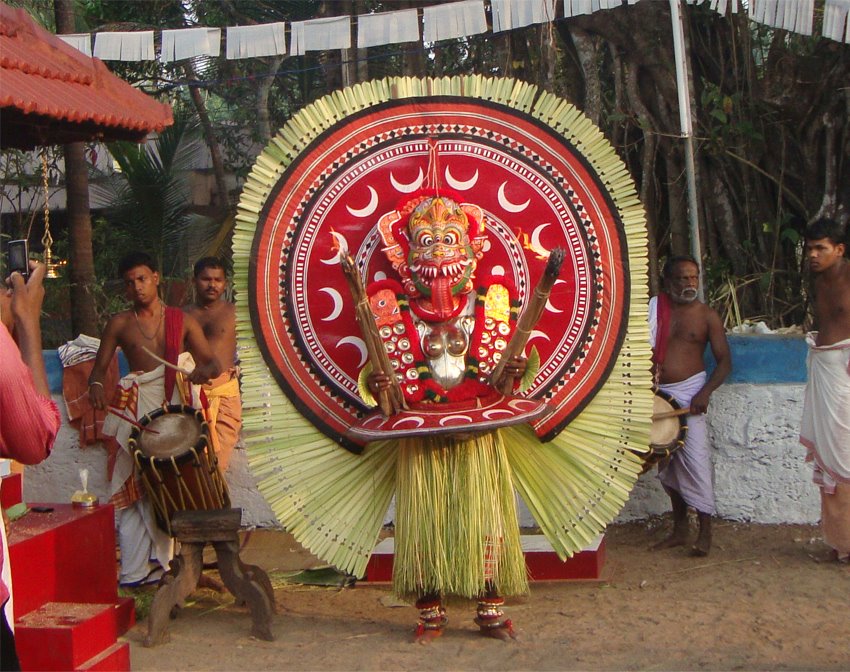
Kundor Chamundi Theyyam
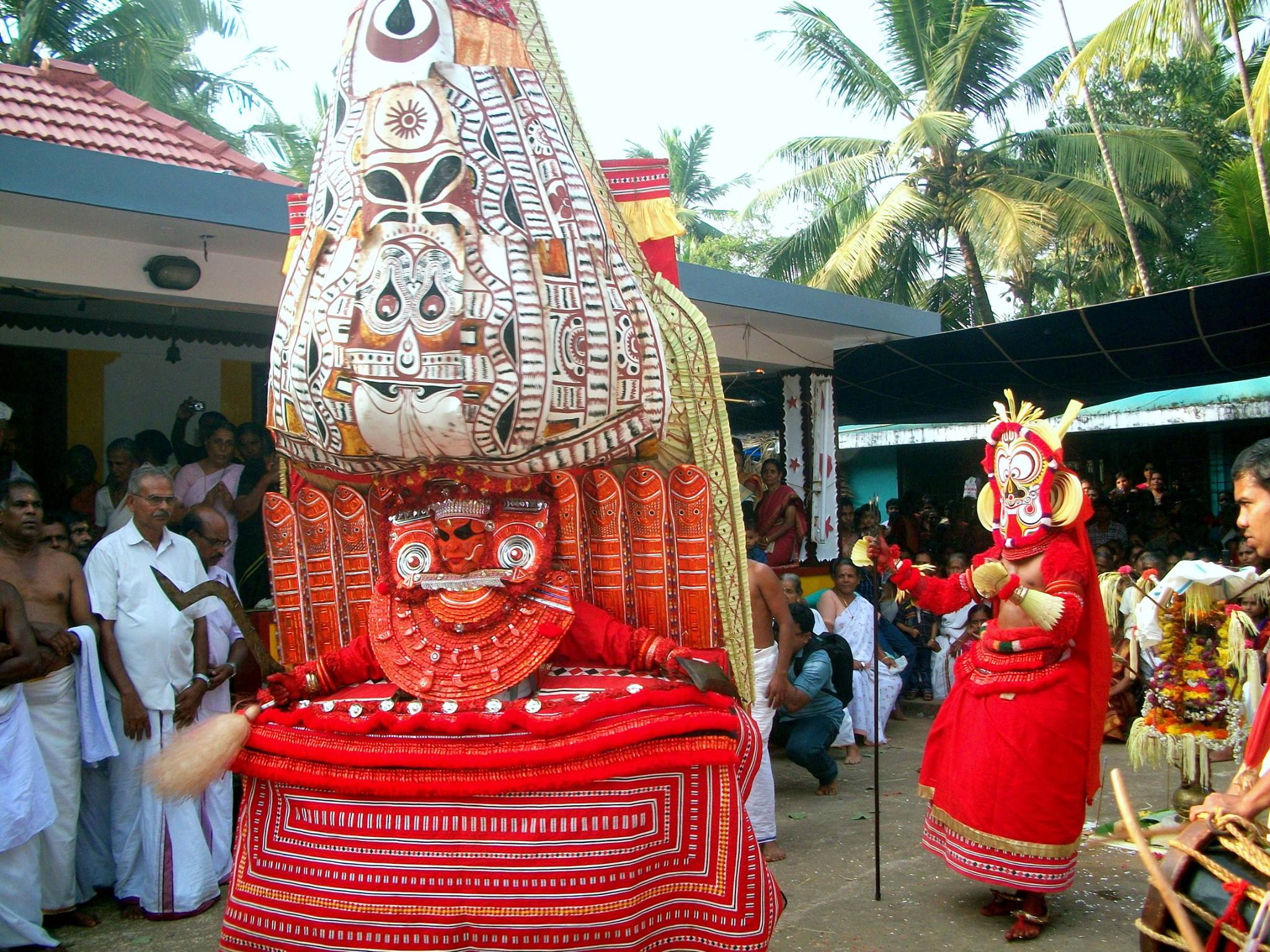
Dhandiyanghanathu Bhagavathy Theyyam
